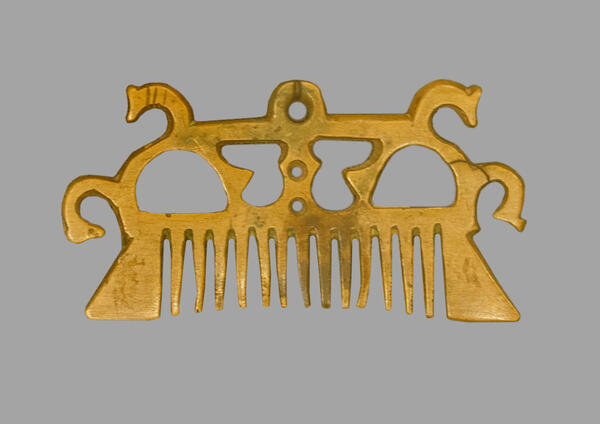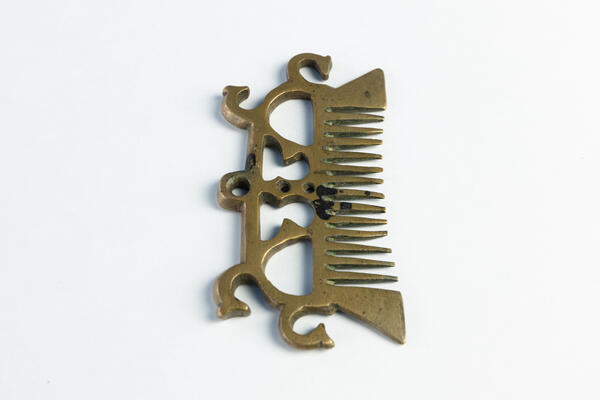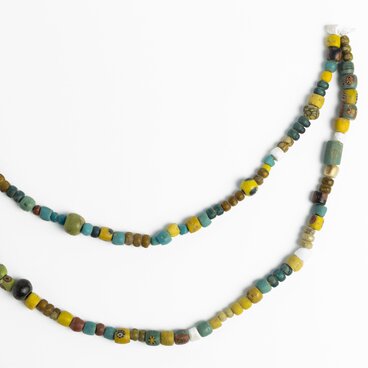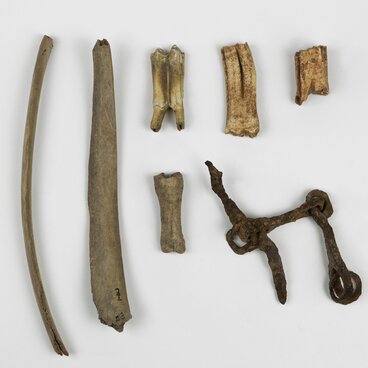A comb is a personal item used by women as a brush, hairpin and hair accessory. Often the comb was an element of traditional clothing of many peoples. At all times and in all cultures, combs have been a popular household item and served several purposes: utilitarian, hygienic, industrial and magical. In Finno-Ugric mythology, a haircut or loss of hair was interpreted as a loss of one’s soul, which could lead to the person’s death. It was allowed to comb the hair only with an object with magical power, so they made a sacred ornament on the combs and treated them with respect.
Among the Slavic and Finno-Ugric peoples, hair combs were one of the most powerful pagan protection amulets and charms. After the Christianization of the Finno-Ugric population of Russia, combs, unlike other pagan objects, were not banned by priests for being symbols of idol worship. The comb was worn with pride, it remained part of the traditional Udmurt clothing.
The bronze comb in the collection of the Glazov Museum was part of a jewelry set of an Udmurt woman. It was worn on a belt along with other metal objects that made a chime when walking and scared away evil spirits. There is a ring on the openwork back of the comb, which allowed the owner to hang it on a chain. The upper part of the comb features styled horse heads, which look in opposite directions. The horses are one of the key images in the decorative art of the Slavic and Finno-Ugric peoples.
Young Russian women, who lived in the Volga region, Karelia, and in the Ural region, often wore combs with horse heads. Images of horses or “valo-valo” are often found on artifacts of the traditional material culture of the Udmurts: on medieval bone and bronze ear scoops, in embroidery on clothes and towels, on hats, roof ridges and carved window frames. The motif of the paired horse heads was supposed to enhance the object’s protective powers. Young Udmurt women wore bronze combs with horses until the beginning of the 20th century, but even today the image of a horse remains one of the most popular in world culture.
Among the Slavic and Finno-Ugric peoples, hair combs were one of the most powerful pagan protection amulets and charms. After the Christianization of the Finno-Ugric population of Russia, combs, unlike other pagan objects, were not banned by priests for being symbols of idol worship. The comb was worn with pride, it remained part of the traditional Udmurt clothing.
The bronze comb in the collection of the Glazov Museum was part of a jewelry set of an Udmurt woman. It was worn on a belt along with other metal objects that made a chime when walking and scared away evil spirits. There is a ring on the openwork back of the comb, which allowed the owner to hang it on a chain. The upper part of the comb features styled horse heads, which look in opposite directions. The horses are one of the key images in the decorative art of the Slavic and Finno-Ugric peoples.
Young Russian women, who lived in the Volga region, Karelia, and in the Ural region, often wore combs with horse heads. Images of horses or “valo-valo” are often found on artifacts of the traditional material culture of the Udmurts: on medieval bone and bronze ear scoops, in embroidery on clothes and towels, on hats, roof ridges and carved window frames. The motif of the paired horse heads was supposed to enhance the object’s protective powers. Young Udmurt women wore bronze combs with horses until the beginning of the 20th century, but even today the image of a horse remains one of the most popular in world culture.




